Fireflies are more than just a magical sight on warm summer nights—they’re also beneficial insects that help control garden pests and indicate a healthy ecosystem. But while most gardeners focus on planting for bees and butterflies, few realize that you can also attract fireflies with the right plants and environment.
In this article, we’ll explore 14 plants that naturally attract fireflies, creating a garden that glows—literally. These plants offer ideal shelter, moisture, and sometimes even food sources for fireflies in their various life stages.
Whether you’re hoping to enjoy that nostalgic summer glow or want to support a more biodiverse backyard, adding these firefly-friendly plants to your garden is an enchanting and eco-conscious move. Create your own twilight light show—no batteries required.
Wild Lupine
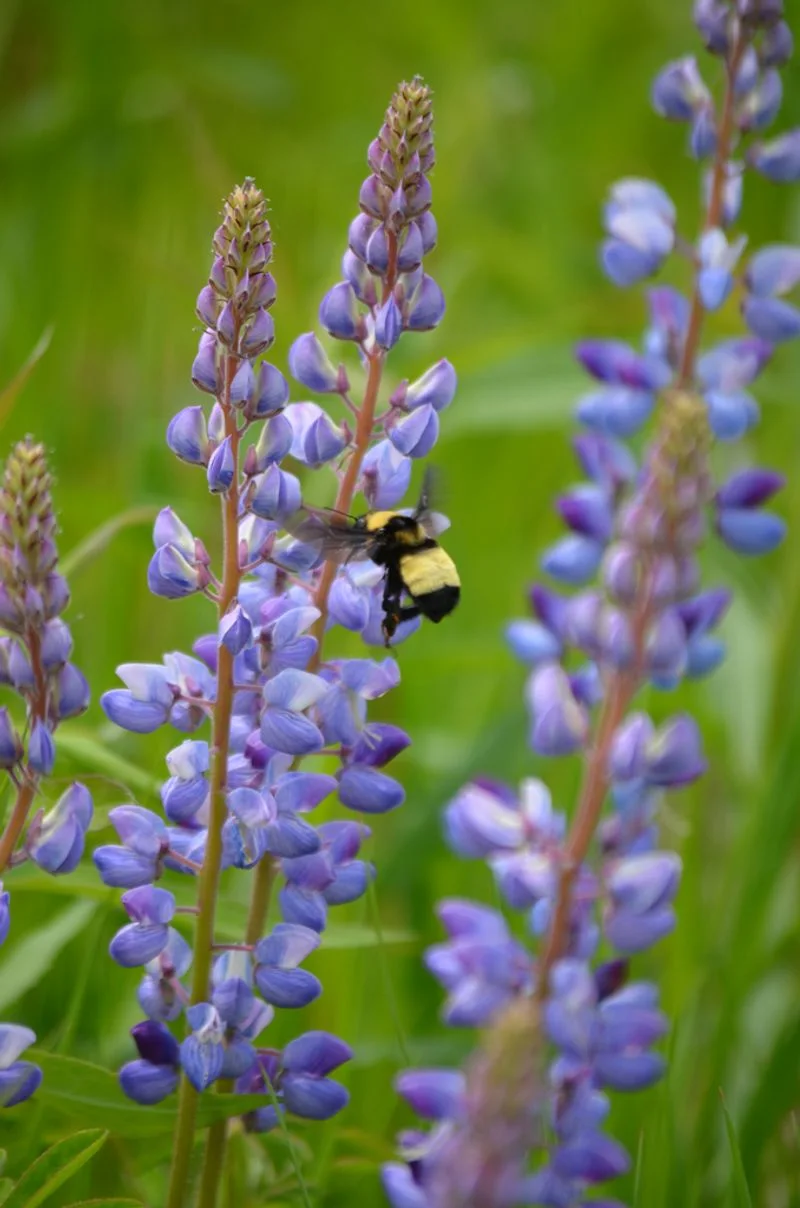
Wild Lupine stands tall with its vibrant spikes of blue, purple, and pink flowers. Typically found in open woods and prairies, this plant serves as a beacon for fireflies. Its ability to thrive in sandy, well-drained soils makes it ideal for sunny gardens. Besides its stunning appearance, Wild Lupine improves soil fertility by fixing nitrogen, a boon for surrounding vegetation. Its presence in a garden signifies a commitment to biodiversity, as it supports various insect species, including the winged wonders of the night. The unique hues of its blossoms add a touch of elegance and charm to any outdoor space.
Marsh Marigold
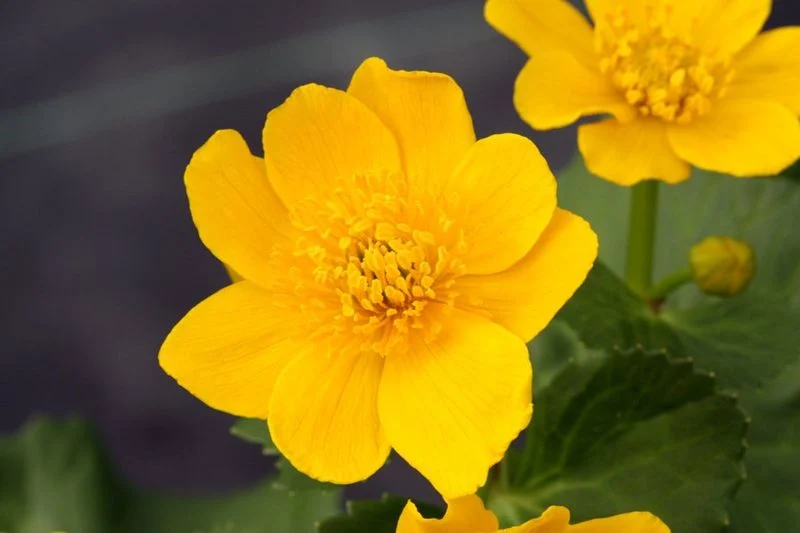
The Marsh Marigold’s vibrant yellow blooms light up wet, marshy areas, creating a glowing oasis for fireflies. Its preference for damp conditions makes it perfect for water gardens or pond edges. As an early spring bloomer, it provides one of the first nectar sources for insects awakening from winter’s chill. The cheerful flowers resemble buttercups and are a joy to behold against the soft glow of firefly light. Marsh Marigold’s ability to thrive in less-than-ideal conditions demonstrates nature’s resilience, making it a delightful addition to any garden seeking to attract both beauty and biodiversity.
Joe-Pye Weed
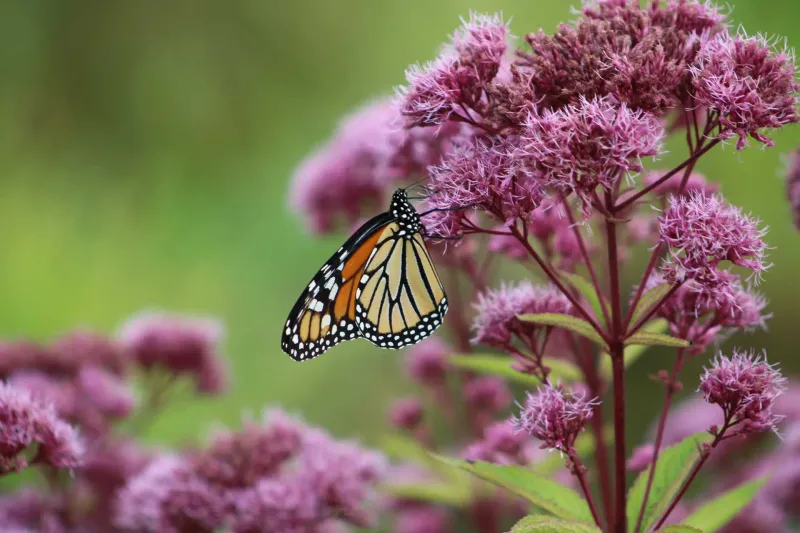
With its tall stature and dusty pink flowers, Joe-Pye Weed towers gracefully in any garden. Often found in meadows and wetland areas, it provides a critical habitat for fireflies. The sweet vanilla scent of its blossoms acts as a siren call, drawing these luminous insects in droves. Joe-Pye Weed is more than just a pretty face; it’s a powerhouse of pollinator attraction, offering sustenance to butterflies and bees alike. Its majestic appearance and ecological importance make it a captivating choice for gardeners who wish to create a magical, firefly-friendly environment.
Wild Bergamot
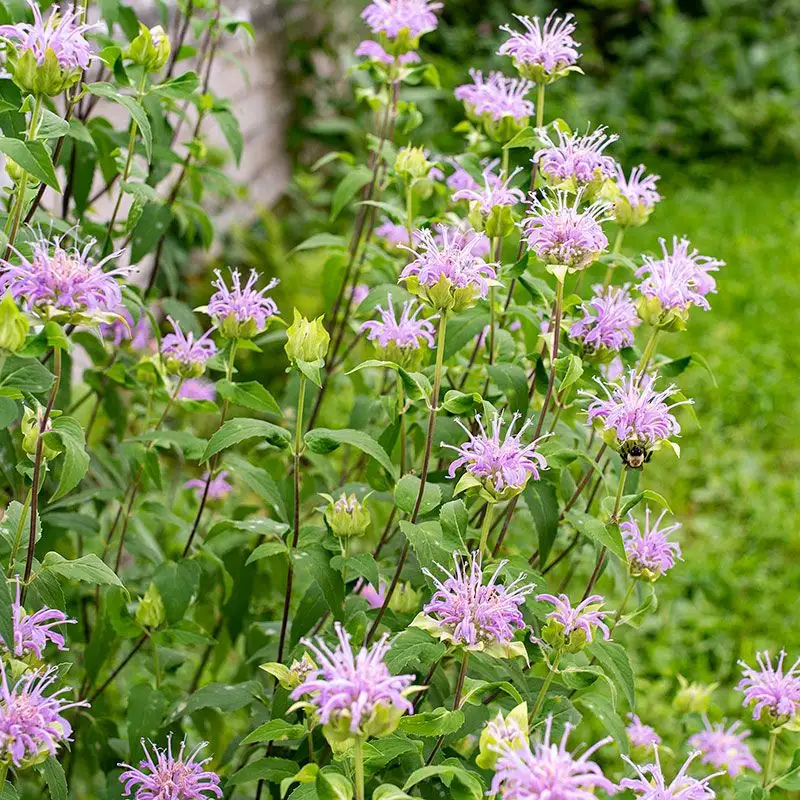
Wild Bergamot, often called bee balm, bursts with striking lavender blooms that captivate both insects and onlookers. Commonly found in prairies and open areas, it thrives in sunny spots with well-drained soil. This plant’s aromatic leaves and flowers are irresistible to pollinators and fireflies alike. Its significance extends beyond its beauty; Wild Bergamot has a history of medicinal use, providing remedies for ailments. Its presence in the garden creates an inviting scene where nature’s smallest creatures gather, offering a serene setting during summer evenings, enhanced by the soft, warm glow of fireflies.
Queen Anne’s Lace
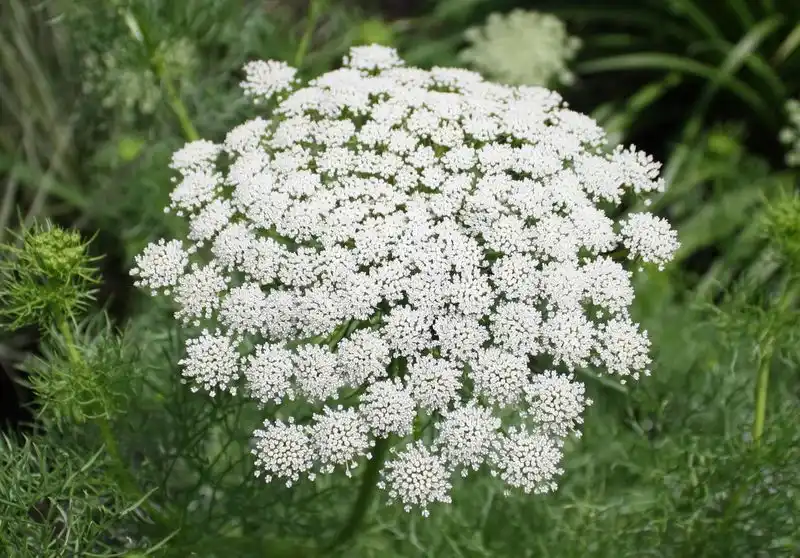
Queen Anne’s Lace, with its intricate white flower clusters, paints a picture of elegance in fields and gardens. This plant’s delicate blooms are a canvas for fireflies, enhancing the nighttime spectacle. Tolerant of poor soil conditions, it thrives where other plants may struggle, demonstrating resilience and adaptability. Its lacy blooms are not only visually appealing but also host a variety of beneficial insects. Known for its carrot-like aroma, Queen Anne’s Lace offers a touch of wild charm to cultivated spaces. Its allure attracts not just fireflies, but also those who appreciate nature’s subtle beauty.
Evening Primrose
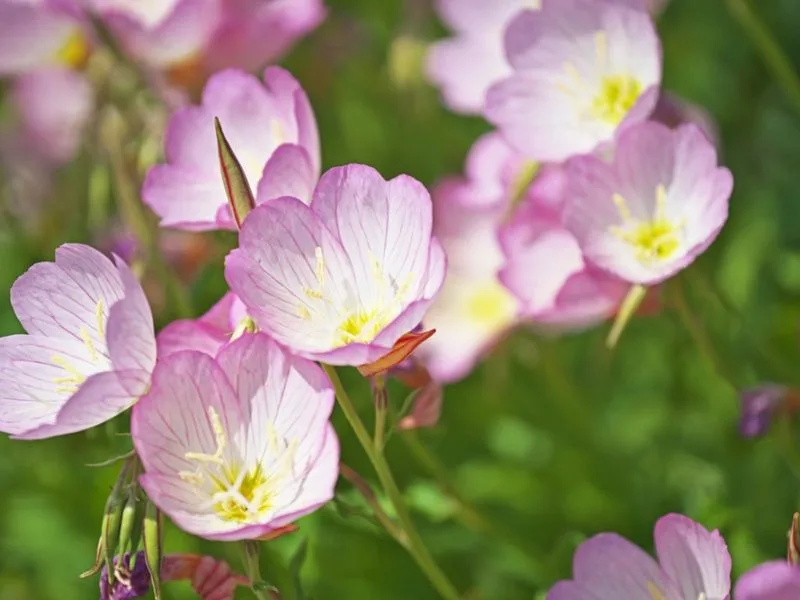
Evening Primrose captivates with its bright yellow flowers that unfurl as the sun sets, drawing fireflies to their nightly dance. This nocturnal blooming habit not only synchronizes with firefly activity but also provides nectar for pollinators. Thriving in a variety of soil types, it is an adaptable addition to any garden. Evening Primrose’s historical roots in herbal medicine add an intriguing layer to its charm. As the evening air cools, its scent intensifies, creating a fragrant atmosphere that beckons night creatures to gather, offering a delightful and dynamic display in the moonlight.
Cardinal Flower
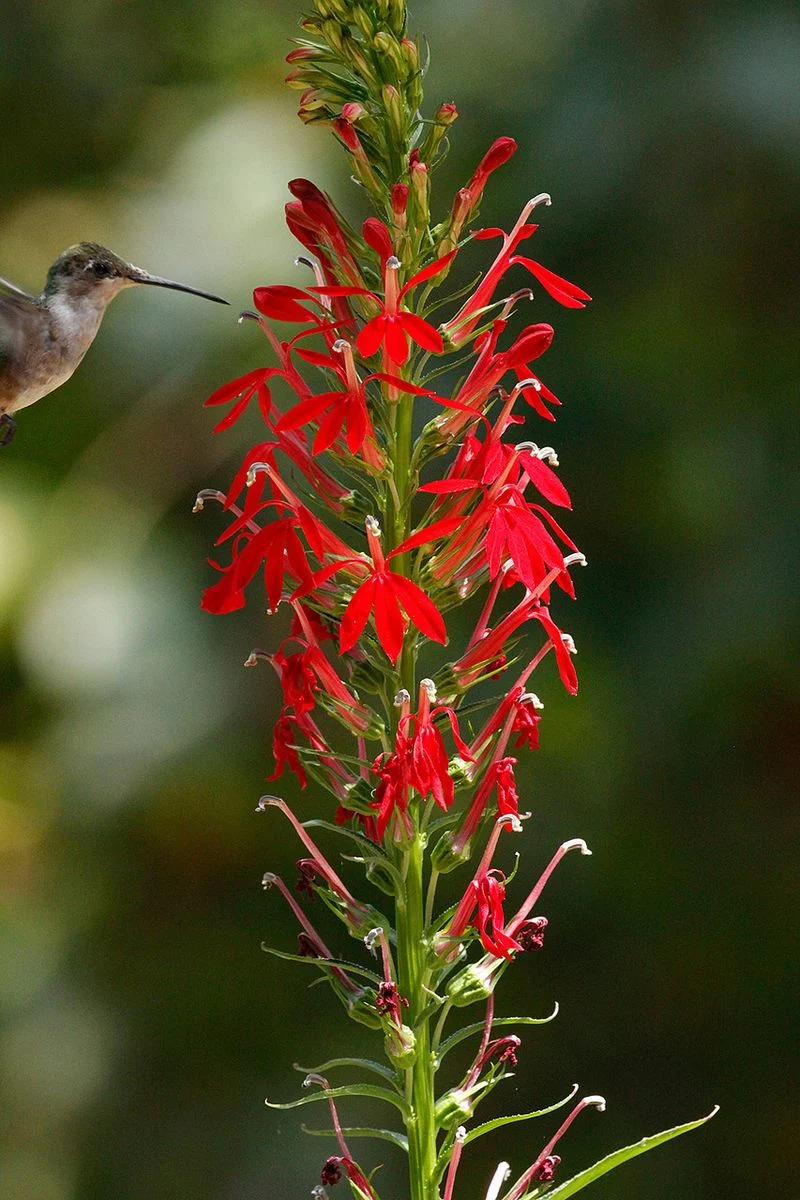
The Cardinal Flower’s striking red blooms stand as beacons of vibrancy near streams and wetlands. Its vivid color attracts not only hummingbirds and butterflies but also the enchanting glow of fireflies. Preferring moist soil, it’s perfect for water gardens or areas with consistent moisture. The plant’s tall spikes create vertical interest in the landscape, drawing the eye upwards to observe the natural wonders. The Cardinal Flower’s allure extends beyond its striking appearance, offering a haven for creatures of the night and day. Its presence guarantees a splash of color and movement, enriching any outdoor space.
Butterfly Weed
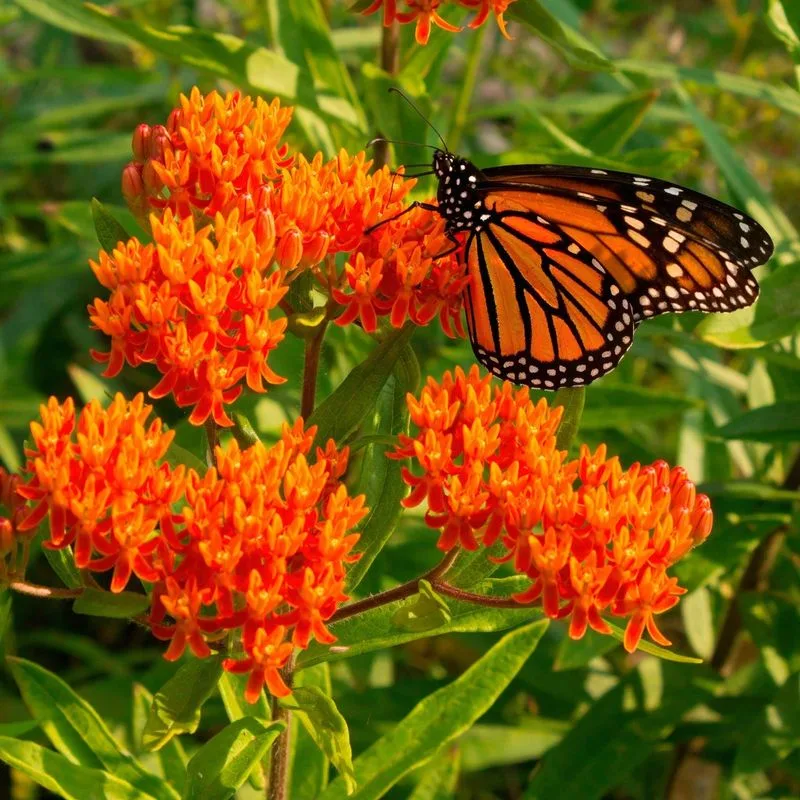
Butterfly Weed’s vibrant orange flowers burst forth in sunny meadows, providing a fiery backdrop for fireflies. Its drought-tolerant nature makes it a resilient choice for gardens seeking color and life. Besides attracting butterflies, its sweet nectar lures fireflies, creating a dynamic interplay of light and movement. Native to prairies, this plant supports various pollinators and contributes to ecological balance. As the day transitions to night, its blossoms continue to shine, fostering a lively habitat where fireflies dance above, turning the meadow into a lively, natural theater of glowing activity.
Fennel
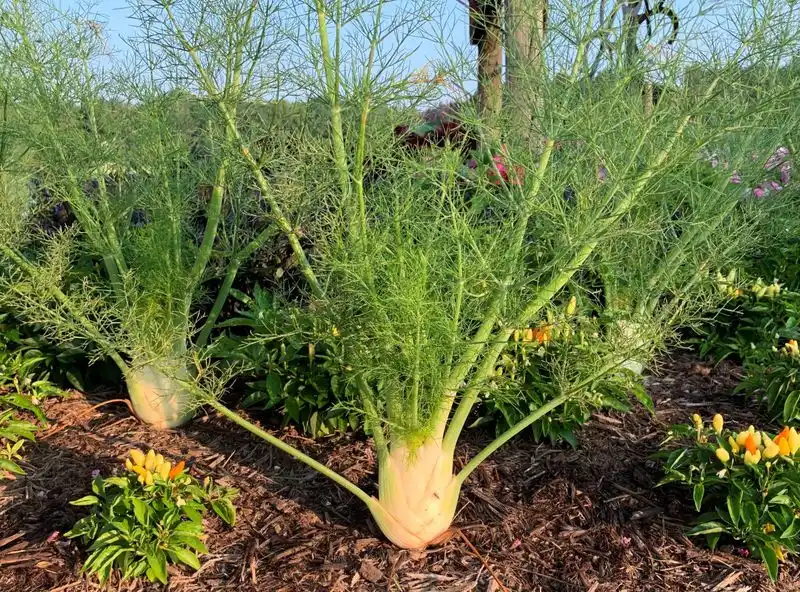
Fennel’s feathery foliage sways gently in the breeze, releasing a subtle, licorice-like aroma that attracts fireflies. This herbaceous plant thrives in sunny gardens, adding texture and fragrance to the landscape. Beyond its culinary uses, fennel’s umbels provide a stage for fireflies to perform their nightly ballet. The plant’s tall, slender stalks create a whimsical silhouette against a moonlit sky. Fennel’s ability to draw beneficial insects, including fireflies, highlights its role in promoting garden health. Its presence promises not only a feast for the senses but also a lively, nocturnal showcase of nature’s wonders.
Purple Coneflower
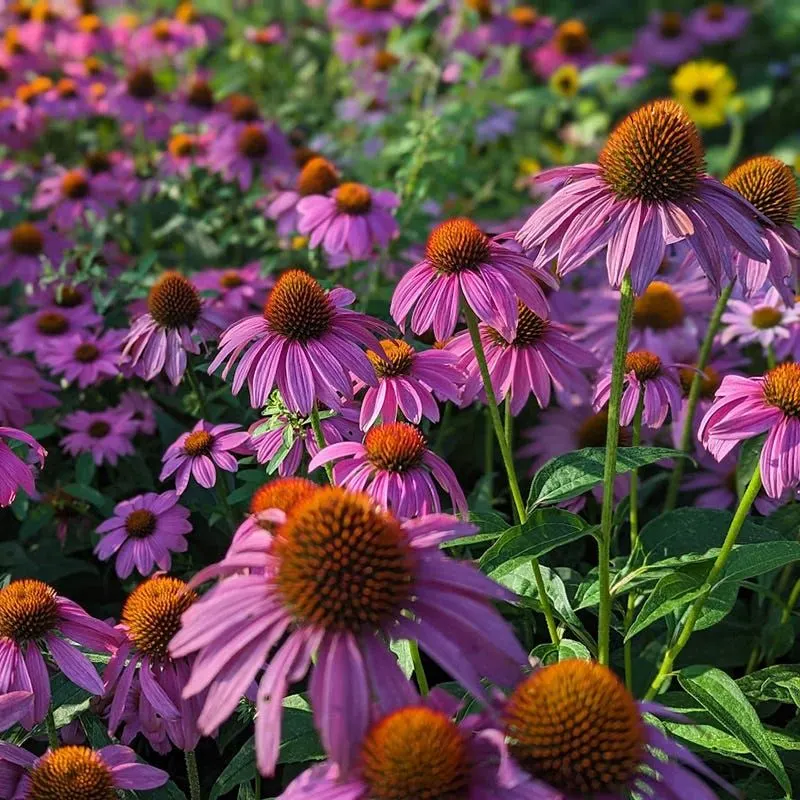
The Purple Coneflower’s large, daisy-like blooms are a favorite among gardeners and insects alike. Its vibrant purple petals and distinctive orange centers create a striking visual. Known for its resilience, this plant thrives in various soil conditions and is drought-tolerant, making it an ideal choice for sustainable gardening. As twilight descends, the fireflies’ gentle luminescence complements the coneflower’s bold hues. Beyond its beauty, Purple Coneflower is renowned for its medicinal properties, offering benefits that extend beyond the garden. Its presence ensures a dynamic display of color and light, captivating all who venture outdoors.
Swamp Milkweed

Swamp Milkweed’s alluring pink flowers are a magnet for fireflies, butterflies, and other pollinators. Growing in moist, swampy areas, it’s perfect for rain gardens or pond edges. This plant’s tall, sturdy stems and vibrant blooms add structure and color to any space. Known for its role in supporting monarch butterflies, it doubles as a firefly haven. Swamp Milkweed’s ability to thrive in wet conditions showcases its adaptability and ecological value. As night falls, the interplay of fireflies and flowers creates a magical scene, inviting observers to pause and appreciate the beauty of nature.
Yarrow

Yarrow’s flat-topped clusters of tiny flowers create a tapestry of colors that attract fireflies to their nocturnal gathering. Common in meadows and open fields, it thrives in well-drained soil and full sun. Known for its medicinal qualities, yarrow has been used in traditional remedies for centuries. Its fern-like foliage adds texture, while its flowers provide a focal point for nighttime illumination. The plant’s resilience and versatility make it a staple in wildlife-friendly gardens. As dusk sets in, yarrow’s blossoms and the ambient glow of fireflies offer a serene and enchanting garden experience.
Bee Balm
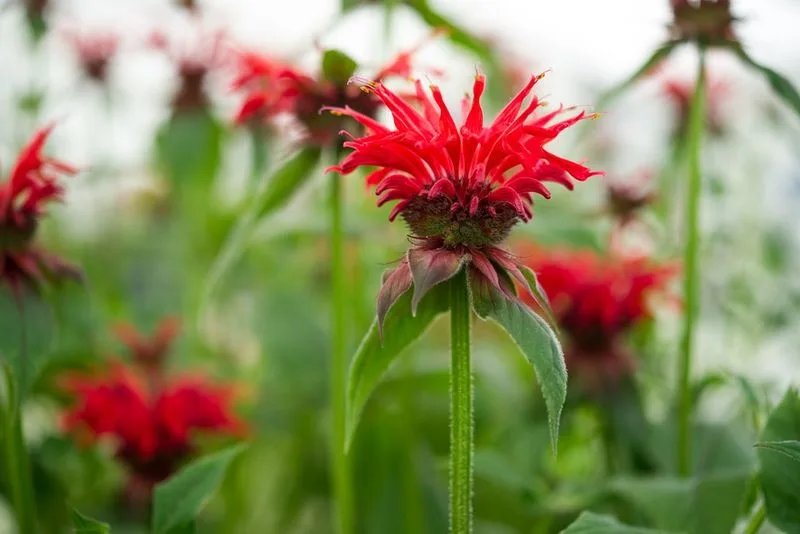
Bee Balm, with its distinctive tubular flowers, adds a splash of color and fragrance to any garden. Its vibrant shades range from deep red to soft lavender, attracting a multitude of pollinators, including fireflies. Ideal for sunny spots with well-drained soil, bee balm is a versatile plant that supports ecological diversity. Its aromatic leaves and blossoms are not only visually appealing but also serve as a culinary herb. The plant’s ability to attract fireflies creates a magical atmosphere, transforming gardens into nocturnal spectacles filled with gentle light and lively movement.
Black-Eyed Susan

Black-Eyed Susan’s bright yellow petals and dark centers create a cheerful display that resonates with fireflies. Commonly seen in meadows and along roadsides, this resilient plant thrives in various soil conditions. Its long blooming period ensures extended garden interest, drawing an array of pollinators, including bees and fireflies. Known for its carefree nature, Black-Eyed Susan offers gardeners a low-maintenance option that delivers high-impact color. As twilight descends, the interplay of fireflies and flowers creates an enchanting scene, inviting observers to linger and enjoy the simple pleasure of nature’s nighttime show.

